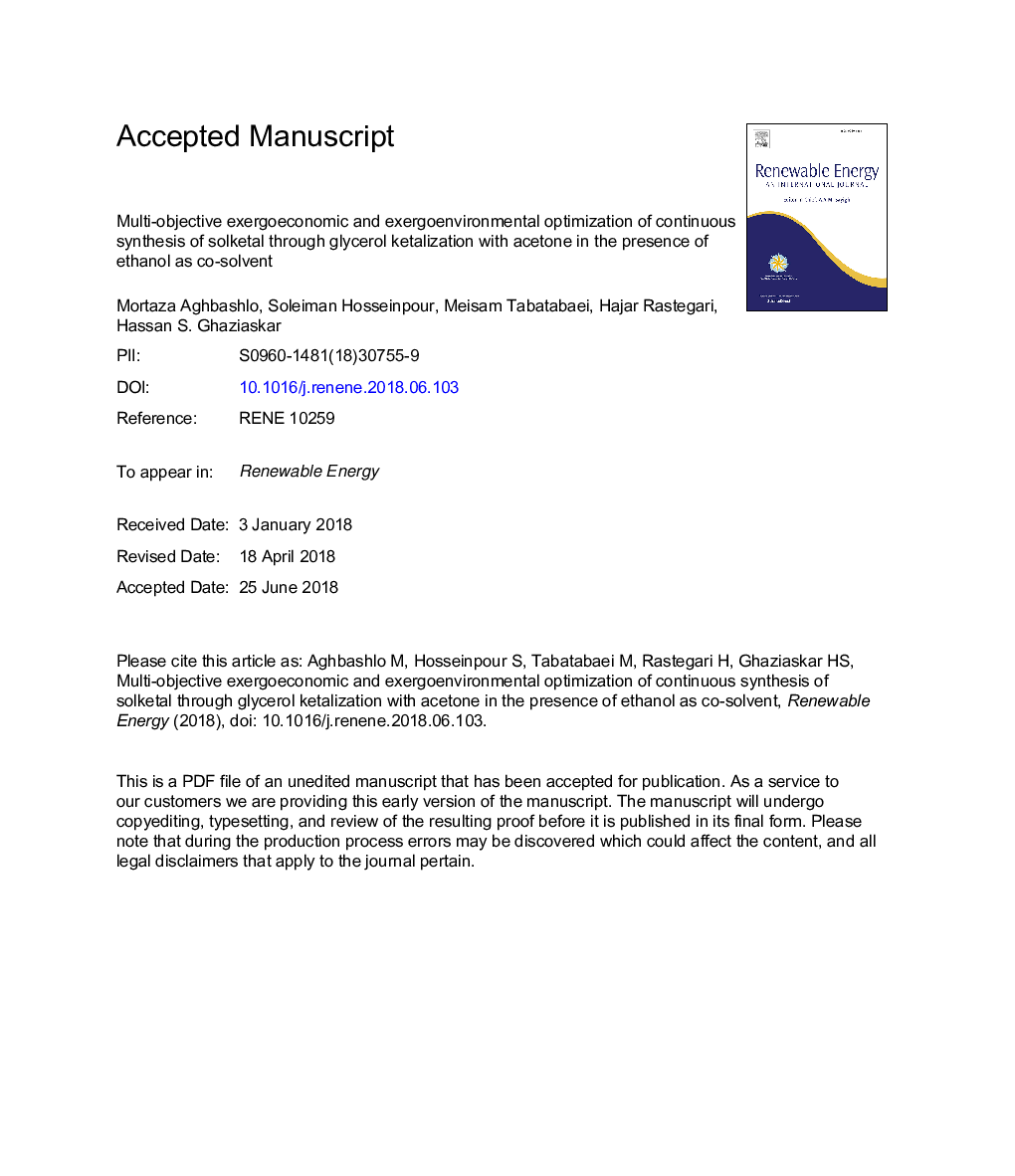| کد مقاله | کد نشریه | سال انتشار | مقاله انگلیسی | نسخه تمام متن |
|---|---|---|---|---|
| 6763815 | 1431572 | 2019 | 50 صفحه PDF | دانلود رایگان |
عنوان انگلیسی مقاله ISI
Multi-objective exergoeconomic and exergoenvironmental optimization of continuous synthesis of solketal through glycerol ketalization with acetone in the presence of ethanol as co-solvent
دانلود مقاله + سفارش ترجمه
دانلود مقاله ISI انگلیسی
رایگان برای ایرانیان
کلمات کلیدی
موضوعات مرتبط
مهندسی و علوم پایه
مهندسی انرژی
انرژی های تجدید پذیر، توسعه پایدار و محیط زیست
پیش نمایش صفحه اول مقاله

چکیده انگلیسی
This work was aimed at conducting a multi-objective exergoeconomic and exergoenvironmental optimization of continuous synthesis of solketal through glycerol ketalization with acetone in the presence of ethanol as co-solvent and Purolite PD206 as catalyst. Exergoeconomic and exergoenvironmental performance parameters of the reactor were computed and discussed comprehensively after writing and solving their balance equations based on the experimental data. The effects of process parameters viz. ketalization temperature (T), acetone/glycerol molar ratio (X), feed flow rate (F), reaction pressure (P), and catalyst quantity (C) on the exergy-based variables were investigated in detail. The optimization process was performed based on minimizing two more important exergetic parameters, i.e., cost and environmental per unit of exergy for the product. To this end, an elaborated coupled version of adaptive neuro-fuzzy inference system (ANFIS) and non-dominated sorting genetic algorithm-II (NSGA-II) was employed. The ANFIS approach was used for modeling the process, while the NSGA-II was applied for finding the optimum operating conditions of the reactor. According to the results obtained, the ANFIS approach successfully predicted both objective parameters with an R2 higher than 0.99. The optimum ketalization conditions for solketal synthesis in the developed reactor corresponded to Tâ¯=â¯35.1â¯Â°C, Xâ¯=â¯4.5, Fâ¯=â¯0.4â¯mL/min, Pâ¯=â¯26.7â¯bar, and Câ¯=â¯2.2â¯g, leading to the cost and environmental impact per unit of exergy for the product of 5032.9 USD/GJ and 143.9 mPts/GJ, respectively.
ناشر
Database: Elsevier - ScienceDirect (ساینس دایرکت)
Journal: Renewable Energy - Volume 130, January 2019, Pages 735-748
Journal: Renewable Energy - Volume 130, January 2019, Pages 735-748
نویسندگان
Mortaza Aghbashlo, Soleiman Hosseinpour, Meisam Tabatabaei, Hajar Rastegari, Hassan S. Ghaziaskar,